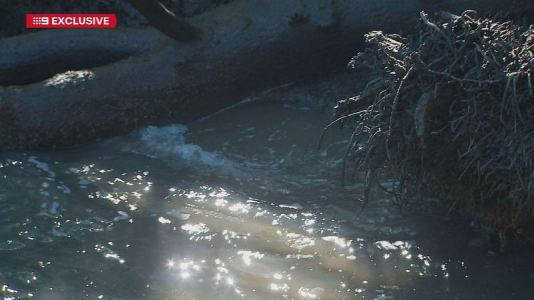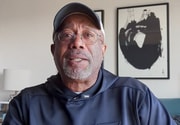There’s something brown in one of our most famous rivers—and it’s definitely not mud
By
Maan
- Replies 0
Raw sewage has been secretly pouring into one of Queensland’s most iconic rivers.
Residents were left shocked to learn how much has already been released—and that it’s still happening.
Officials say the alternative would be even worse.
The Brisbane River has been receiving hundreds of megalitres of raw, untreated sewage, mixed with storm water, as a result of a long-running sewerage tunnel renewal project.
Urban Utilities confirmed the contamination was being discharged near Colmslie Beach Reserve in Morningside to prevent the system from backing up into homes.
‘If we're not doing that then it would flow back into our network and present in people's homes or even their backyards,’ Urban Utilities chief executive Paul Arnold said.
The issue began roughly 18 months ago when complications affected the crucial under-river works.
Since then, during periods of heavy rain, including Cyclone Alfred, the network had been unable to cope with the volume—resulting in waste being dumped directly into the river.
Reports revealed that more than 540 megalitres had been released into the waterway during that time—the equivalent of 216 Olympic-sized swimming pools.
Arnold claimed the actual waste content in the mixture was ‘really quite small and very difficult to calculate’.
‘The quantities reflect a calculation of duration and the frequencies but what's important for the community is they're aware of when the releases occur and that they're advised of the condition of the river during that period,’ he said.
But there was still no clear timeframe on when the construction work would be completed and the discharges stopped.
Adam Bowden, from Stop Raw Sewage into Brisbane Rivers and Creeks, said residents were losing faith.
‘We want people to come to Brisbane and see a beautiful [river],’ he said.
‘If we continue on the path that we're going, we're not going to see that.’
Queensland University of Technology’s Dr Luke Shi said the Brisbane River could ‘handle a certain amount’ of the mixed waste, but warned that public interaction during peak periods of release was the key concern.
Brisbane City Council monitored Enterococci bacteria levels in the river and used a reading of 500 as an indicator of significant risk.
Following Cyclone Alfred, samples taken at Colmslie reportedly spiked to more than three times that threshold while sewage outflow was at its highest.
However, no government department had drawn a direct link between the sewage release and the elevated bacteria levels.
If this story has you questioning what’s really flowing through our rivers, you’re not alone.
Similar concerns have popped up in other communities grappling with the aftermath of sewage leaks and environmental neglect.
One recent incident left a lasting impact on locals who once trusted their waterways without a second thought.
Read more: Remember when rivers were safe to fish in? Locals say this spill changed everything

What does it say about our priorities if we allow one of our most iconic rivers to become a dumping ground?
Residents were left shocked to learn how much has already been released—and that it’s still happening.
Officials say the alternative would be even worse.
The Brisbane River has been receiving hundreds of megalitres of raw, untreated sewage, mixed with storm water, as a result of a long-running sewerage tunnel renewal project.
Urban Utilities confirmed the contamination was being discharged near Colmslie Beach Reserve in Morningside to prevent the system from backing up into homes.
‘If we're not doing that then it would flow back into our network and present in people's homes or even their backyards,’ Urban Utilities chief executive Paul Arnold said.
The issue began roughly 18 months ago when complications affected the crucial under-river works.
Since then, during periods of heavy rain, including Cyclone Alfred, the network had been unable to cope with the volume—resulting in waste being dumped directly into the river.
Reports revealed that more than 540 megalitres had been released into the waterway during that time—the equivalent of 216 Olympic-sized swimming pools.
Arnold claimed the actual waste content in the mixture was ‘really quite small and very difficult to calculate’.
‘The quantities reflect a calculation of duration and the frequencies but what's important for the community is they're aware of when the releases occur and that they're advised of the condition of the river during that period,’ he said.
But there was still no clear timeframe on when the construction work would be completed and the discharges stopped.
Adam Bowden, from Stop Raw Sewage into Brisbane Rivers and Creeks, said residents were losing faith.
‘We want people to come to Brisbane and see a beautiful [river],’ he said.
‘If we continue on the path that we're going, we're not going to see that.’
Queensland University of Technology’s Dr Luke Shi said the Brisbane River could ‘handle a certain amount’ of the mixed waste, but warned that public interaction during peak periods of release was the key concern.
Brisbane City Council monitored Enterococci bacteria levels in the river and used a reading of 500 as an indicator of significant risk.
Following Cyclone Alfred, samples taken at Colmslie reportedly spiked to more than three times that threshold while sewage outflow was at its highest.
However, no government department had drawn a direct link between the sewage release and the elevated bacteria levels.
If this story has you questioning what’s really flowing through our rivers, you’re not alone.
Similar concerns have popped up in other communities grappling with the aftermath of sewage leaks and environmental neglect.
One recent incident left a lasting impact on locals who once trusted their waterways without a second thought.
Read more: Remember when rivers were safe to fish in? Locals say this spill changed everything
Key Takeaways
- More than 540 megalitres of sewage-storm water mix was released into the Brisbane River over 18 months.
- The discharges occurred due to a sewerage tunnel upgrade facing delays.
- Urban Utilities said the releases prevented sewage backflow into homes.
- Enterococci levels near outflow sites were over three times the safe threshold after Cyclone Alfred.
What does it say about our priorities if we allow one of our most iconic rivers to become a dumping ground?








